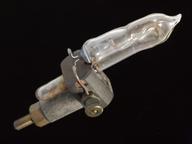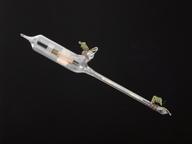

American airborne BC-375-E high-frequency radio transmitter with accessories, 1939-45
- Made:
- 1939-45 in United States
American airborne BC-375-E high-frequency radio transmitter, made by General Electric (US), with serial number 95158 and associated equipment tuning units TU-7-B and TU-8-B, 1939-45. Aerial change-over relay missing. Nearly all BC-375-E transmissions were in CW and voice communication was rarely used. Associated with Science Museum Group object no 1979-385 Dynomotor unit type PE-73-C, 1939-45
The BC-375E was a liaison transmitter or air-to-ground radio transmitter made by General Electric (US) and was primarily used on medium and large aircraft – mostly bombers – during the Second World by the air forces of the United States, Canada and UK. The BC-375E was commonly found in wartime bomber aircraft such as the B-17, B-24, B-25, B-26 and early B-29's. The SCR-287 (the combination of BC-375 and BC-348 receiver) setup was found on thousands of those bombers.
The BC-375E was used extensively throughout most of the Second World War, even in early B-29 installations, but was eventually replaced by the more "modern" and easier to use ART-13 radio set made by Collins Radio Company.
Around 100,000 BC-375E transmitter were produced during the Second World War but they were made largely obsolete by the Collins ART-13 and so crates of BC-375s were left unopened because the military viewed the transmitter as obsolete, at least for bomber aircraft. Nonetheless, BC-375s continued to be used after the Second World War. Some were installed on aircraft during the Korean War and other were purchased as military surplus by radio amateurs although there were power issues and so they were largely suitable for spare parts.




